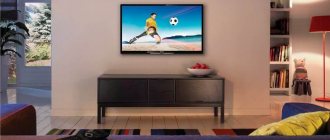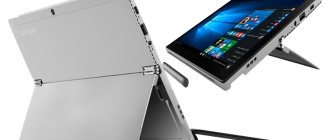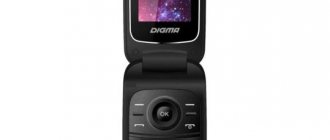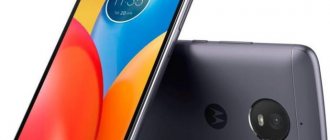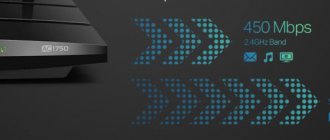How to choose a good LG TV
The choice should begin with studying the influence of certain LG technologies on image and sound quality. You should familiarize yourself in detail with their characteristics and application features.
LG Technologies
LED TV. TV screens made by LG LED TV are a liquid crystal matrix backlit in the form of compact LED elements. Despite the fact that more advanced technologies have appeared, these TVs are in demand by viewers: they are distinguished by excellent color reproduction and have wide viewing angles.
OLED. Thanks to the use of self-illuminating pixels, it is possible to obtain a particularly clear and contrasting image and achieve ideal black color reproduction. OLED TV perfectly conveys motion and provides unique detail. The technology has made it possible to simplify the design of the screen, make it thinner, and is used to create the best LG TVs.
Nano Cell. A layer of particles, each about one nanometer in size, allows you to filter light waves, increase saturation, remove distortion, and eliminate glare. Maintains high image quality even when multiple light sources are located near the screen.
HDR. A technology that takes the UHD standard to a higher level of quality. This is a new video signal format that contains additional data about the color and brightness of each individual pixel. With HDR, the image becomes more realistic, the number of shades increases, more details are displayed, and clarity increases.
Apple TV, AirPlay 2, HomeKit. Support for mobile applications allows users of good LG TVs to access a variety of films and programs on Apple TV+, iTunes. AirPlay 2 makes it possible to connect smartphones and tablets to the TV via Wi-Fi or Bluetooth to share content. HomeKit integrates your TV and other household appliances into a single system.
LG TV designations
The TV marking is usually indicated on the price tag, so you can find and decipher it even without the help of a sales assistant. For LG equipment it looks like this:
LG 00 AB 2 3 4 C, where:
- 00 - the first two digits indicate the size of the TV display (in inches);
- A - letter screen codes;
- B is the letter code of the year when this model was developed;
- 2 - series to which the device belongs;
- 3 — serial number of the model in the series;
- 4 - a number indicating any changes in the design;
- C - letter code of the matrix type, its resolution, digital tuner.
Please note that the markings of LG OLED TVs are slightly different from those presented:
OLED 00 A 1 B, where:
- OLED - TV display type;
- 00 — screen diagonal in inches;
- A - number of a model with excellent design;
- 1 - the year when this model was presented by the developers;
- B — device tuner type.
Now you can move on to a more detailed analysis of each item.
Features of the 2021 model range
LG Alpha 9 Gen 3: The third generation Alpha 9 video processor is 15% faster than previous CPUs. Creates a good picture and high-quality sound, improves content of any type - with the help of artificial intelligence it scales the resolution to 8k. Due to its high performance, it allows you to successfully implement the functions of automatic configuration and content selection.
WebOS. A robust, embedded operating system that's great for browsing the Internet, has excellent social media integration, and is intuitive to use. WebOS implements multitasking, allows you to access Smart TV functions, and expands the TV's customization options.
Dolby Vision IQ. Latest video quality optimization feature that takes into account external light sources. Through the use of special sensors, Dolby Vision IQ adjusts settings and eliminates glare. Automatic adjustment allows you to change display settings depending on the content.
It will be easier to choose a TV if you first study the characteristics of the best models of different product lines. Here you should pay attention to both the advantages and
LG GX Gallery 4K Series
New for 2021: LG has introduced the Signature GX line of 4K Smart TVs, also known as the Gallery series, replacing last year's E series. Backed by an ultra-thin OLED wallpaper design, the Gallery series fits flush against the wall, extending just 20 millimeters, with no gap, no visible post or fixture, and no shadow behind it.
And unlike LG's full-screen wallpaper models, the Signature GX has all the components, ports and speakers built into its ultra-thin chassis. So there is no additional connection box or soundbar to worry about. The TVs even come with their own mount for hanging on the wall.
LG GX Gallery
The LG Signature GX Gallery OLED is on sale now and is available in 55-inch, 65-inch and 75-inch sizes. Wall-mounted TVs start with the 55-inch OLED55GX for $2,499, the 65-inch OLED65GX for $3,499, and the larger 77-inch OLED77GX for $5,999.
- Gallery Design (wall mount included)
- Alpha 9 Gen 3 Intelligent Processor
- AI Picture Pro, Automatic Genre Selection, AI Sound
- ThinQ AI (Google Assistant/Amazon Alexa)
- Dolby Vision, HDR10, HLG
- Dolby Vision IQ
- Filmmaker Mode
- Dolby Atmos support
- AI Sound Pro
- HDMI 2.1 certified (includes eARC, variable refresh rate and 120fps support)
The best LG OLED models
1
OLED TV LG OLED88ZX9 88″ – The best TV from LG
Rating:5.0
- 8K (7680×4320), HDR
- screen diagonal 88″
- Screen refresh rate 100 Hz
- Smart TV (webOS), Wi-Fi
- sound power 80 W (2x20 + 4x10 W)
Average price: RUB 2,350,000
According to experts, OLED88ZX9 is one of the best TVs on the video equipment market. It is equipped with the latest generation Alpha 9 8K processor. The screen is made using OLED technology. All options are aimed at enhancing the effect of presence. The most realistic image on a huge screen completely captures attention and the viewer seems to become a participant in the events.
- Incredible video game quality thanks to support for NVIDIA G-SYNC video cards;
- Perfect sound created using Dolby Vision IQ and Dolby Atmos technologies;
- Possibility to connect wireless speakers for surround sound effect;
- Access to LG mobile applications and content: films, TV series, shows, broadcasts of sporting events;
- High price.
2
OLED TV LG OLED65GXR 65″
Rating:4.9
- 4K UHD (3840×2160), HDR
- screen diagonal 65″
- Screen refresh rate 100 Hz
- Smart TV (webOS), Wi-Fi
- sound power 60 W (2x10 + 4x10 W)
Average price: RUB 229,716
A TV from Elgie's top line of products equipped with advanced self-illuminating pixel technology. Provides high image quality, excellent color reproduction, clarity and detail. Great for both watching movies and playing video games. The realism of dynamic scenes is achieved through even greater signal processing speed, minimizing response time, and increasing frame rates using VRR, ALLM and eARC technologies.
- Ultra-thin body;
- Operating system webOS version 5.0;
- “Flicker-free” technology implements operating modes that are as comfortable as possible for the viewer’s eyes;
- Intelligent sound adjustment according to the content being shown;
- The cost of the model is very high.
3
OLED TV LG OLED65CXR 65″
Rating:4.8
- 4K UHD (3840×2160), HDR
- screen diagonal 65″
- Screen refresh rate 100 Hz
- Smart TV (webOS), Wi-Fi
- sound power 40 W (2x10 + 2x10 W)
Average price: RUB 170,190
The latest Alpha 9 3 Gen processor is 15% more powerful than the previous generation CPU, providing fast and high-quality processing of video and audio signals. Self-illuminating pixels improve color reproduction, detail and allow you to create the most realistic images. Convenient control using voice commands or the universal Magic Remote M20 allows you to comfortably watch TV shows, movies, and spend time on the Internet reading news or exploring interesting sites.
- Minimalist modern design;
- The screen has wide viewing angles;
- Professional sound with Dolby Atmos and Dolby Vision IQ;
- VRR, ALLM and eARC technologies to improve the quality of audio and video during video games;
- Great cost.
4
OLED TV LG OLED55CXR 55″
Rating:4.7
- 4K UHD (3840×2160), HDR
- screen diagonal 55″
- Screen refresh rate 100 Hz
- Smart TV (webOS), Wi-Fi
- sound power 40 W (2x10 + 2x10 W)
Average price: RUB 122,810
Incredibly deep blacks are available thanks to self-illuminating pixel technology. OLED allows you to get clear, bright, rich colors, improves detail, increases the realism of the image, creating an immersive effect. The third generation processor accelerates audio and video processing, reducing response time and improving dynamic scenes, as well as sound and picture quality.
- Thin screen;
- Wide viewing angles;
- Dolby Vision IQ automatically changes picture settings to match the content;
- Large selection of films, series, TV shows when connected to LG TV+;
- Based on the analysis of the programs watched, it generates personal recommendations;
- The connectors are difficult to access if the TV is hung on the wall.
LG Rollable RX OLED
If there's one series we can't wait to see in stores, it has to be the stunning looking OLED. After initially announcing that the flexible, rollable TV would be on sale in 2021, LG assures us that a new upgraded model, now called the Signature RX Rollable OLED, will be available later this year.
LG's OLED technology combines the precision and quality of OLED with flexible glass and an innovative segmented substrate, creating a breathtaking twist on a thin TV panel. When not in use, the foldable display folds compactly into its stylish base, hidden from view until you want to watch TV. Turn it on and the 65-inch screen automatically expands, giving you the same exquisite quality and impressive smart features as any other LG OLED TV.
Since LG has retooled the flexible OLED for 2021, it also features an Alpha 9 Gen 3 processor, which is a step up from the second-generation chip.
Initial comments from LG pegged the retail price of the 65-inch rollable OLED at $60,000, although it could be more when the TV hits the market.
- Rollable design
- Alpha 9 Gen 3 Intelligent Processor
- AI Picture Pro, Automatic Genre Selection, AI Sound
- ThinQ AI (Google Assistant/Amazon Alexa)
- Dolby Vision, HDR10, HLG
- Dolby Vision IQ
- Filmmaker Mode
- Dolby Atmos support
- AI Sound Pro
- HDMI 2.1 certified (includes eARC, variable refresh rate and 120fps support)
LG RX 4K OLED TV
TOP LG NanoCell models
1
TV NanoCell LG 65NANO996 65″
Rating:5.0
- 8K (7680×4320), HDR
- screen diagonal 65″, IPS
- Screen refresh rate 100 Hz
- Smart TV (webOS), Wi-Fi
- sound power 60 W (2x10 + 4x10 W)
Average price: RUB 224,999
Excellent image quality, bright, rich colors are realized using NanoCell technology. The amazing realism of the video sequence is complemented by excellent surround sound, which creates the impression of complete immersion in what is happening on the screen. The feeling of presence will definitely appeal to fans of video games.
- Energy saving options help reduce electricity consumption;
- The voice recognition function, complemented by ThinQ AI technology, works even at relatively long distances;
- The light sensor, together with the Dolby Vision IQ function, allows you to adjust the picture to external lighting conditions;
- Motion Pro option eliminates blur when displaying fast movements;
- Upscaling to 8k format.
2
TV NanoCell LG 65NANO956 65″
Rating:4.9
- 8K (7680×4320), HDR
- screen diagonal 65″, IPS
- screen refresh rate 50 Hz
- Smart TV (webOS), Wi-Fi
- sound power 40 W (2x10 + 2x10 W)
Average price: RUB 169,990
Unique color purity is achieved through the use of NanoCell technology. Fast video processing, smooth movements, high-quality pictures with excellent implementation of 8k resolution are achieved using the latest generation Alpha 9 processor. The built-in webOS operating system gives access to SmartTV options, LG TV channels, and a large amount of interesting content. Additional features: music search, support for 37 languages, parental mode.
- It is possible to connect via Wi-Fi, Bluetooth, LAN, four HDMI, three USB inputs and other connectors;
- Incredible sound clarity and depth with Dolby Atmos;
- Built-in intelligent technologies for content recommendation, voice recognition, and work with external connected devices;
- 12 month warranty.
3
TV NanoCell LG 55NANO906 55″
Rating:4.8
- 4K UHD (3840×2160), HDR
- screen diagonal 55″, IPS
- Screen refresh rate 100 Hz
- Smart TV (webOS), Wi-Fi
- sound power 20 W (2x10 W)
Average price: RUB 74,990
In this model, NanoCell technology, by filtering light waves of certain wavelengths, allows you to achieve excellent image clarity, high contrast, and obtain bright, saturated colors. Good black depth allows you to achieve better image realism and get even more pleasure from watching your favorite films.
- Wide viewing angles due to the use of an IPS matrix;
- ThinQ AI implements voice control not only for the TV, but also for compatible devices;
- Interaction with virtual assistants Alexa and Google Assistant has been implemented;
- Music recognition option available;
- Optimized system for content analysis and recommendations;
- Convenient Magic Remote.
4
TV NanoCell LG 55NANO866 55″
Rating:4.7
- 4K UHD (3840×2160), HDR
- screen diagonal 55″, IPS
- Screen refresh rate 100 Hz
- Smart TV (webOS), Wi-Fi
- sound power 20 W (2x10 W)
Average price: RUB 59,830
Good TV for its price. The advantages of the device include: good contrast, acceptable peak brightness, wide color gamut, excellent image clarity and detail. The acoustics of the TV are also excellent - the mid and high sound frequencies are well balanced. Even with slight harmonic distortion, audio quality remains acceptable at any volume;
- Good viewing angles;
- No glare in moderate lighting;
- Motion Pro ensures clear images even in the most dynamic scenes;
- The WebOS platform is simple and easy to use;
- Voice recognition function available;
- Gray uniformity is not good enough, darkening is observed at the edges of the screen.
5
TV NanoCell LG 49NANO866 49″
Rating:4.6
- 4K UHD (3840×2160), HDR
- screen diagonal 49″, IPS
- Screen refresh rate 120 Hz
- Smart TV (webOS), Wi-Fi
- sound power 20 W (2x10 W)
Average price: RUB 49,990
In this model, a bright, saturated image is achieved through the NanoCell filtration technique. The finest particles eliminate inaccurate shades and enhance the purity of color display. Contrast modulation technology allows you to get 4k images of maximum quality.
- Improved video and audio quality due to the modern α7 Gen 3 processor;
- Proven photobiological safety of the screen, confirmed by international studies;
- High contrast due to the Nano Black function;
- Intelligent adjustment of image parameters depending on the content;
- Advanced HDR formats - HLG and HDR 10 - create rich, vibrant, lifelike UHD images.
LG CX OLED 4K
LG CX OLED upgrades the 2021 C9 OLED TV to a new Alpha 9 Gen 3 processor and the latest version of WebOS. The CX also gets an expanded range of sizes starting at 48 inches and going up to 77 inches. For the first time, LG offered a 48-inch OLED, bringing the flawless quality of OLED technology to small spaces.
CX OLED 4K
The CX, like LG's other OLED displays, will also offer Nvidia G-Sync compatibility, and with the new 48-inch model promises to be one of the best 4K gaming TVs you can buy, with better PC gaming support than anything else. or on the market.
LG CX OLED is now available in 55-, 65- and 77-inch models. The 55-inch OLED55CX sells now for $1,799. The 65-inch OLED65CX is available at most major retailers for $2,799, while the 77-inch OLED77CX retails for $4,999.
- Alpha 9 Gen 3 Intelligent Processor
- AI Picture Pro, Automatic Genre Selection, AI Sound
- ThinQ AI (Google Assistant/Amazon Alexa)
- Dolby Vision, HDR10, HLG
- Dolby Vision IQ
- Filmmaker Mode
- Dolby Atmos support
- AI Sound Pro
- HDMI 2.1 certified (includes eARC, variable refresh rate and 120fps support)
The most successful LG 4K UHD models
1
LG 65UN73006 65″
Rating:5.0
- 4K UHD (3840×2160), HDR
- screen diagonal 65″, IPS
- screen refresh rate 50 Hz
- Smart TV (webOS), Wi-Fi
- sound power 20 W (2x10 W)
Average price: RUB 48,900
Lg TV is equipped with a modern processor with built-in AI, which allows you to get perfect smoothness when demonstrating dynamic scenes and achieve minimal latency in video games. Through the use of HDR 10 Pro and HLG Pro technologies, excellent image quality with high detail, brightness and contrast is achieved. Convenient control using voice commands and the Magic Remote M20 makes it possible to comfortably watch TV shows, movies, as well as read news or explore sites on the Internet.
- Good viewing angles;
- Reducing the amount of glare due to a special screen coating;
- Incredibly realistic surround sound;
- No deep black color;
- The connectors are difficult to access when the TV is mounted on a wall.
2
LG 60UN71006LB 60″
Rating:4.9
- 4K UHD (3840×2160), HDR
- screen diagonal 60″, VA
- screen refresh rate 50 Hz
- Smart TV (webOS), Wi-Fi
- sound power 20 W (2×10 W)
Average price: RUB 46,900
The VA sensor produces superb 4k images that feature rich colors and excellent contrast. The advantages of the TV also include high peak brightness and good quality of transmission of dynamic scenes. Automatic switching to video game mode has been implemented: the TV recognizes its launch from compatible equipment. Surround sound with noise filtering and auto-volume adjustment depending on the content.
- Multifunctional, ergonomic Magic Remote;
- Simple and convenient setup;
- Voice control;
- Supports HDR 10 Pro and HLG Pro for high image quality;
- Neat, minimalistic design – the screen frame is thin, almost invisible.
3
LG 55UN80006 55″
Rating:4.8
- 4K UHD (3840×2160), HDR
- screen diagonal 55″, IPS
- screen refresh rate 50 Hz
- Smart TV (webOS), Wi-Fi
- sound power 20 W (2x10 W)
Average price: RUB 44,900
Support for HDR technology and the use of an advanced IPS matrix allow you to obtain high-quality images with realistic color reproduction and good clarity. The powerful processor quickly processes the video signal, which improves graphics when displaying motion. DNLA support makes it possible to connect a variety of gadgets to the TV. The Ultra Surround system uses audio signal distribution algorithms to create incredibly realistic surround sound.
- Voice control function;
- Energy saving options available;
- There is a tuner necessary for recording content to disk;
- Wide viewing angles;
- Smart TV functions are implemented based on webOS0;
- Black display is not of high quality;
- Insufficient contrast.
4
LG 43UN74006LA 43″
Rating:4.7
- 4K UHD (3840×2160), HDR
- screen diagonal 43″, IPS
- screen refresh rate 50 Hz
- Smart TV (webOS), Wi-Fi
- sound power 20 W (2×10 W)
Average price: RUB 32,199
High-quality 4k TV at an affordable price. Supporting HDR technology and a powerful quad-core processor, you can achieve stunning visuals on a 43-inch screen. The picture quality differs sharply for the better from Full HD. Fast video signal processing allows you to make the transmission of motion as realistic as possible and ensures low signal latency in games.
- ThinQ AI is a recognition system that enables voice control of the TV;
- Ultra Surround audio signal distribution technology that realizes the surround sound effect;
- Improved images by upscaling to 4k;
- No high-quality low sound frequencies;
- Local dimming is not implemented;
- Not a high contrast ratio;
- Low peak brightness.
5
LG 43UN71006LB 43″
Rating:4.6
- 4K UHD (3840×2160), HDR
- screen diagonal 43″, IPS
- screen refresh rate 50 Hz
- Smart TV (webOS), Wi-Fi
- sound power 20 W (2×10 W)
Average price: RUB 29,050
For a modern smart TV with 4K resolution and extensive functionality, the device is sold at a relatively low price. At the same time, it has a high-quality image, has no delays and produces an excellent picture in video games, and is capable of reproducing realistic sound with the help of additional wireless speakers. Equipped with the latest generation webOS and supports mobile applications, ensuring the most comfortable user interaction with the TV.
- A quad-core processor increases contrast and improves color reproduction;
- There is a function to scale the image to 4k resolution;
- Voice control available;
- Automatic image adaptation in films using the FILMMAKER MODE function;
- Surround sound.
LG BX OLED
LG's entry-level B-series OLED TVs will also return in 2020. The budget OLED BX is available in 55- and 65-inch sizes and has many of the features found in the more expensive CX and GX models, such as Dolby Vision IQ intelligent HDR, Dolby Atmos audio and Nvidia G-Synch support for PC gaming on an OLED TV . The BX series models feature a less powerful Alpha 7 Gen 3 4K processor, but still have Google Assistant built-in and Amazon Alexa support.
BX OLED
The 55-inch OLED55BX retails for $1,599, while the larger 65-inch OLED65BX retails for $2,299.
- Alpha 7 Gen 3 Intelligent Processor
- AI Picture, Auto Genre (with Dolby Vision HDR only), AI Sound
- ThinQ AI (Google Assistant/Amazon Alexa)
- Dolby Vision, HDR10, HLG
- Dolby Vision IQ
- Dolby Atmos support
- AI Sound
- HDMI 2.1 (includes eARC, variable refresh rate and 120fps support)
List of all OLED models:
- ZX 8K OLED
- 77″ — 21000$
- 88″ — 43000$
- RX 4K OLED
- 65″ — 70000$
- GX 4K OLED
- 55″ — 2750$
- 65″ — 4400$
- 77″ — 8800$
- WX 4K OLED
- 65″ — 5400$
- CX 4K OLED
- 48″ — 1950$
- 55″ — 2500$
- 65″ — 3000$
- 77″ — 7700$
- BX 4K OLED
- 55″ — 1700$
- 65″ — 2700$
LG TVs 2011 - 3D for everyone
LG TVs 2011 - 3D for everyoneElectronics is a South Korean company that was founded back in 1958. At that time it was called GoldStar, and this name lasted until 1995. It was this year that the company was renamed Lucky GoldStar (actually, LG is an abbreviation for Lucky GoldStar). From the very beginning, the corporation's specialization was electronics - so, in 1959, the company released the first transistor radio in Korea, which marked the beginning of exports. In general, Lucky GoldStar became the first in the country in many electronics positions: in 1960 the first electric fan was released, in 1965 - a refrigerator, in 1966 - a black and white TV, in 1968 - a washing machine, in 1970 - m - automatic multi-button telephone.
Now the company is one of the “sharks” in the markets of consumer electronics, household appliances and mobile communications. LG has 112 facilities worldwide (including 81 subsidiaries), employing more than 84,000 people.
Televisions are one of the company’s highest priority areas; a huge number of new models are developed every year. And the year 2011 was no exception - in this sector LG released 5 product lines, 4 of which include TVs with 3D technology.
Most 3D TVs produced by LG use LED backlight technology - this is LED backlighting, thanks to which such devices are lightweight, have a very thin panel and have low power consumption. The overwhelming majority of 2011 models are based on liquid crystal matrices. So, let’s go through all the lines and determine what’s interesting about them.
Full LED line
Actually, this line is represented by only one model - LZ9700, but what a model! This is currently the world's largest liquid crystal 3D TV, its diagonal is 72 inches. One of the advantages of the model is that thanks to the local dimming system, extremely deep black levels are achieved. This TV will support active 3D technology.
LZ9700
By the way, LG for the first time introduced two different 3D technologies: active and passive.
Active is the technology used by most 3D TVs and is complemented by shutter glasses. The lenses of these glasses are liquid crystal “shutters” sandwiched between two plastic glasses. When a frame appears on the TV for the left eye, the left “shutter” opens and the right one closes. When a frame for the right eye is displayed on the TV screen, the whole procedure is repeated in reverse: the left “shutter” closes, and the right one opens. Such glasses contain a lot of electronics that allow this operation to be carried out at high speed - about 60 closings/openings for each eye per second.
The disadvantages of such a system include: high cost, the need to frequently recharge the glasses, as well as a lot of eye strain and the potential for headaches (however, now manufacturers are actively fighting against the last two disadvantages and have largely succeeded).
In 2011, LG Electronics was the first to offer models with passive 3D technology - their operating principle is the same as in 3D cinemas. A special film is attached to the matrix of such televisions, separating the even and odd lines of the screen. To see a three-dimensional image, the viewer will also need special glasses, but “passive” ones (similar glasses are given when visiting a 3D cinema). There is not an ounce of electronics in them, and the glass is a polarizer that cuts off unnecessary frames. Such glasses are much lighter and cheaper than “active” ones, and the technology itself is much more affordable.
Active 3D - left, passive 3D - right
Let us remember that the LZ9700 model uses active 3D technology. There is also a Smart TV function - the ability to work with the Internet. To do this, the NetCast Internet platform is installed on the TV, through which you can access almost any website.
For the convenience of working with the Internet, this TV, in addition to the regular remote control, is equipped with a Magic Wand (or Magic Motion) remote control. It has only 6 buttons, and it serves as a kind of alternative to a mouse: when you press the “OK” button, a cursor appears on the screen that repeats the movements of the remote control.
In addition, this TV uses AV Link wireless connection, which allows you to connect devices to your TV without a cable. Using a special device that is attached to the rear panel, the signal is transmitted over a distance of up to 25 meters.
Key Features of LZ9700:
- LED backlight;
- active 3D system;
- Smart TV with NetCast and built-in web browser;
- TruMotion 400/480 Hz technology;
- DLNA standard support;
- Magic Wand control panel;
- Wi-Fi Ready;
- wireless AV Link interface.
Nano Full LED
In this series, the company produces two model lines: LW9500 and LW7700. All models use Nano Full LED technology, which creates ultra-thin TVs. It is an extremely thin film with holes measuring 10 to the minus ninth power of a meter (hence the name “nano”). LG claims that Nano film provides light distribution that eliminates unevenness and other defects in the backlight system. Naturally, all models are equipped with 3D technology (active type), Smart V function and have the ability to record using a USB port.
The LW9500 is available in 47-inch and 55-inch models (47LW9500 and 55LW9500).
Key Features of LW9500:
- Nano backlight technology;
- LED backlight;
- active 3D system;
- Smart TV with NetCast and built-in web browser;
- TruMotion 400/480 Hz technology;
- DLNA standard support;
- Magic Wand control panel;
- built-in Wi-Fi;
- recording via USB port;
- wireless AV Link interface.
Magic Wand Controller
The LW7700 is one step lower in the model hierarchy. Its main difference from the LW9500 is the matte surface of the screen instead of the front glass panel on top of the LCD matrix. This range is represented by TVs with diagonals of 42, 47 and 55 inches (42LW7700, 47LW7700 and 55LW7700).
Key Features of LW7700:
- Nano backlight technology;
- LED backlight;
- active 3D system;
- Smart TV with NetCast and built-in web browser;
- TruMotion 400/480 Hz technology;
- DLNA standard support;
- Magic Wand control panel;
- built-in Wi-Fi;
- wireless AV Link interface.
LED Plus
This series includes 5 model lines, 3 of which are equipped with a passive 3D system - the company calls it Cinema 3D. These are LW6500, LW5600, LV5500, LV5300 and LW4500.
LW6500 is the most expensive model range in the series. In terms of their capabilities, these devices are almost similar to Full LED and Nano Full LED, the only difference is 3D technology. These TVs will be sold in 42-, 47- and 55-inch diagonals (42LW6500, 47LW6500 and 55LW6500).
Main characteristics of LW6500:
- side LED lighting;
- passive 3D (Cinema 3D);
- Smart TV with NetCast and built-in web browser;
- four 3D glasses included;
- TruMotion technology 200/240 Hz;
- Magic Wand control panel;
- Wi-Fi Ready;
- wireless AV Link interface.
The LW5600 represents slightly cheaper models. Their main difference from their “older” brothers is TruMotion technology. This line represents devices with diagonals of 32, 42, 47 and 55 inches (32LW5600, 42LW5600, 47LW5600 and 55LW5600).
Key Features of LW5600:
- side LED lighting;
- passive 3D (Cinema 3D);
- Smart TV with NetCast and built-in web browser;
- four 3D glasses included;
- TruMotion technology 100/120 Hz;
- Magic Wand control panel;
- Wi-Fi Ready;
- wireless AV Link interface.
Passive 3D glasses
The LV5500 is LG's first 2011 series that doesn't use 3D technology. But it still has a wireless interface and Smart TV function. The diagonals of this series are 32, 42, 47 and 55 inches (32LV5500, 42LV5500, 47LV5500 and 55LV5500).
Main characteristics of LV5500:
- side LED lighting;
- Smart TV with NetCast and built-in web browser;
- TruMotion technology 100/120 Hz;
- Magic Wand control panel;
- Wi-Fi Ready;
- wireless AV Link interface.
LV5300 - representatives of this model range no longer have not only 3D, but also Smart TV, so you won’t be able to surf the Internet from such TVs. The company also abandoned the wireless interface. All other features of LG TVs are present here. Similar devices can be found with diagonals of 32, 37, 42 and 47 inches (32LV5300, 37LV5300, 42LV5300 and 47LV5300).
Main characteristics of LV5300:
- side LED lighting;
- 100/120 Hz technology;
- Wi-Fi Ready.
LW4500 is the youngest of the 3D LED TV lineup. Unlike their “older” brothers, these TVs do not have such features as Smart TV, Wi-Fi, and the speaker system is also more affordable. But they do have passive 3D. The diagonals of such devices are 42 and 47 inches (42LW4500 and 47LW4500).
Main characteristics of LW4500:
- side LED lighting;
- passive 3D (Cinema 3D);
- Magic Wand control panel;
- 100/120 Hz technology.
LED
This series includes 6 model series: LV4500, LV3550, LK5500, LK5300, LK4500 and LK4300. None of these devices support 3D and Smart TV functions, and therefore are not equipped with a Magic Wand remote control. The main characteristics of these models are the same; they differ mainly in design and minor changes, such as the number of ports (USB and HDMI), outputs and some capabilities.
Plasma
So we got to LG plasma models. They are represented by as many as eight model series: PZ950, PZ750, PZ570, PZ550, PZ250, PW450, PV350 and PT353.
PZ950 is the flagship series of the series. Such TVs not only support active 3D, but are also made on the basis of the TruBlack panel (with a minimal frame around the screen) and using the high-fidelity display mode - THX. Devices with two diagonals will be available in stores: 50 and 60 inches (50PZ950 and 60PZ950).
Main characteristics of PZ950:
- plasma HDTV;
- active 3D system;
- Smart TV with NetCast and built-in web browser;
- Borderless design;
- THX 2D and 3D certification;
- 600 Hz Sub-field technology;
- recording via USB port;
- Bluetooth;
- DLNA;
- Multiplay;
- TruBlack filter;
- built-in Wi-Fi;
- Magic Wand control panel;
- wireless AV Link interface.
Active 3D glasses
The PZ750 series is located a step lower. It doesn't have Multiplay and doesn't have TruBlack panel. Everything else is in stock. The diagonal options are also similar to the previous ones: 50 and 60 inches (50PZ750 and 60PZ750).
Main characteristics of PZ750:
- plasma HDTV;
- active 3D system;
- Smart TV with NetCast and built-in web browser;
- Borderless design;
- THX 2D and 3D certification;
- 600 Hz Sub-field technology;
- recording via USB port;
- DLNA;
- Wi-Fi Ready;
- Magic Wand control panel;
- wireless AV Link interface.
PZ570 is the next most expensive model range. It still has 3D functionality, but the design has been changed and there is no Magic Wand included. The diagonals are still 50 and 60 inches (50PZ570 and 60PZ570). Televisions of this family are not sold in all countries, and Russia is not yet among the “lucky” ones.
Main characteristics of PZ750:
- plasma HDTV;
- active 3D system;
- Smart TV with NetCast and built-in web browser;
- TruSlim design;
- THX certification;
- 600 Hz Sub-field technology;
- DLNA;
- recording via USB port;
- Wi-Fi Ready;
- wireless AV Link interface.
PZ550 is the more common series. It is “poorer” in functions, but still fulfills the main task - supporting the 3D format. There is no possibility of recording via the USB port and wireless interface. The diagonals of the series are 50 and 60 inches (50PZ550 and 60PZ550).
Main characteristics of PZ550:
- plasma HDTV;
- active 3D system;
- Smart TV with NetCast and built-in web browser;
- TruSlim design;
- DLNA;
- THX certification;
- 600 Hz Sub-field technology;
- Wi-Fi Ready.
3D image without glasses
PZ250 is one of the most inexpensive plasmas with 3D support. The cost reduction occurs due to the fact that the devices in the series do not support DLNA technology and cannot connect to either the Internet or a home network. The THX mode is provided only in 2D format. Diagonals - standard, 50PZ250 and 60PZ250.
Main characteristics of PZ250:
- plasma HDTV;
- active 3D system;
- TruSlim design;
- THX certification in 2D;
- 600 Hz Sub-field technology;
- Wi-Fi Ready.
PW450 is LG's latest 2011 series with active 3D functionality. It does not support HDTV and THX technology, and does not have Wi-Fi. Diagonals of 42 and 50 inches (42PW450 and 50PW450) are available to buyers.
Main characteristics of PZ250:
- active 3D system;
- TruSlim design;
- 600 Hz Sub-field technology.
Finally, the PV350 and PT353 are plasma models without 3D support. They also come in a TruSlim design and vary in the number of ports. PV350 is sold in versions with diagonals of 50 and 60 inches (50PV350 and 60PV350), PT353 - 42 and 50 inches (42PT353 and 50PT353).
In conclusion, it should be noted that, although theoretically sales of the 2011 LG TV line in Russia began a long time ago, in reality it is very, very difficult to find many models in stores. Although with such a wide choice there is always an alternative.
